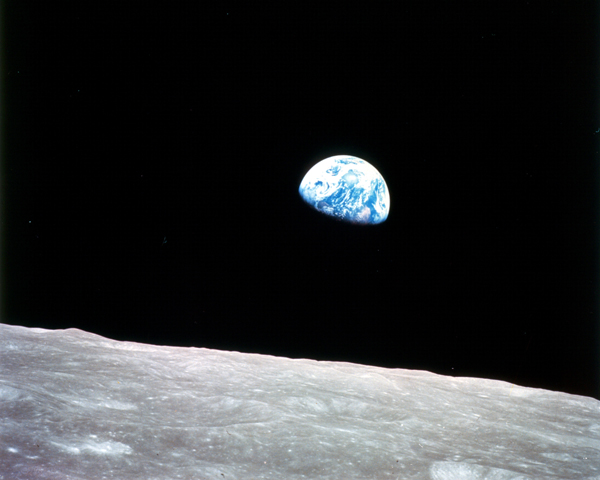Easy Answers to the Top 5 Science Questions Kids Ask
Intro

Why is the moon sometimes out during the day? Why is the sky blue? Will we ever discover aliens? How much does the Earth weigh? How do airplanes stay up?
Those are the five questions kids most often ask their parents, and in that order, according to a new survey conducted in the United Kingdom. Unfortunately, they're tough nuts to crack probably why kids find them so universally puzzling in the first place. Of the 2,000 parents of children ages 5 to 16 who were surveyed about their kid's queries, two-thirds said they struggled with the questions. One-fifth of the parents admitted that if they don't know an answer, they sometimes make up an explanation or pretend that no one knows.
To help prove to your kids that you're no dummy, here are the easy-to-understand answers to their most burning questions.
How do airplanes stay up?

To overcome the forces of drag and gravity, an airplane must generate two forces of its own: thrust and lift.
Thrust is the force that propels an airplane forward on the runway. By Newton's third law every action has an equal and opposite reaction the plane's engine generates forward thrust by spewing fuel backwards. Next, as the plane hurtles down the runway, each of its wings slices the air into two streams, one that flows above it and the other, below. The wings are shaped in such a way that the air flowing over them is ultimately deflected downward, and, again because of Newton's third law, the downward motion of the air causes an equal and opposite upward motion of the plane. This is lift.
Every airplane has a specific takeoff speed the point at which lift overcomes gravity. That critical speed changes based on how much a particular plane weighs. The plane's engine, meanwhile, has to work to provide enough thrust to overcome drag friction with the air. [Do Planes Get Struck by Lightning?]
How much does the Earth weigh?

The first approach to answering this question is to get technical about it. Because the Earth is in free fall around the sun, it actually weighs nothing. The same goes for astronauts in orbit; because they are technically falling around the Earth and if they stood on a scale, it, too, would be falling the scale would read zero.
Alternatively, you could discuss the Earth's mass a property that is independent of where an object is in the universe, or what it is doing. Earth has a mass of 5.97 × 10^24 kilograms the equivalent of one hundred million billion Titanics. [What If Everyone on Earth Jumped at Once?]
Will we ever discover aliens?

No one knows how rare alien life is in the universe, so there's no telling whether humanity will ever manage to discover it. However, scientists at the SETI Institute in California, who are engaged in the search for extraterrestrial intelligence, are hopeful that they'll detect alien signals within the next 20 years. The scientists scan the night sky looking for unnatural radio or light beams ones that could only emanate from an intelligent civilization.
Their 20-year estimate is based on the rapid pace with which astronomers are discovering planets beyond our solar system, including planets that seem suitable for life; it is also based on the assumption that, if there are intelligent beings out there, they, too, will seek contact with others, and will make their presence known by sending signals into space. [What Would Earth Be Like with Two Suns?]
Why is the sky blue?

The light coming from the sun is made of many colors; light travels as a wave, and each color has a unique wavelength. Violet and blue light has shorter wavelengths, while red light has a longer wavelength, and the other colors have wavelengths in between.
When the different colors of light pass through the atmosphere, they run into molecules, water droplets and bits of dust. Because all these particles are closer in size to shorter wavelengths of light, they tend to scatter violet and blue light much more than red, and so they send rays of violet and blue ricocheting toward the ground and your eyes. More violet light actually gets scattered by atmospheric particles than blue light, but your eyes are more sensitive to blue, so the sky appears blue.
Sunsets are orange-red because in the evening, with the sun low on the horizon, sunlight must pass through more atmosphere to get to your eyes, and only the red light can make it all the way through. The shorter wavelengths have all been scattered toward the ground in the part of Earth where it is still daytime. [The Physics of Rainbows, and Other Everyday Things]
Why is the moon sometimes out during the day?

This question burns brightest of all in the minds of kids, according to the UK survey. The answer is simple: The moon is just as likely to be visible during the day as it is at night it orbits Earth independently of the sun. When its orbit brings it to your part of the sky during daylight hours, it is illuminated by the sun, and we can see it.
Sign up for the Live Science daily newsletter now
Get the world’s most fascinating discoveries delivered straight to your inbox.
Natalie Wolchover was a staff writer for Live Science from 2010 to 2012 and is currently a senior physics writer and editor for Quanta Magazine. She holds a bachelor's degree in physics from Tufts University and has studied physics at the University of California, Berkeley. Along with the staff of Quanta, Wolchover won the 2022 Pulitzer Prize for explanatory writing for her work on the building of the James Webb Space Telescope. Her work has also appeared in the The Best American Science and Nature Writing and The Best Writing on Mathematics, Nature, The New Yorker and Popular Science. She was the 2016 winner of the Evert Clark/Seth Payne Award, an annual prize for young science journalists, as well as the winner of the 2017 Science Communication Award for the American Institute of Physics.











